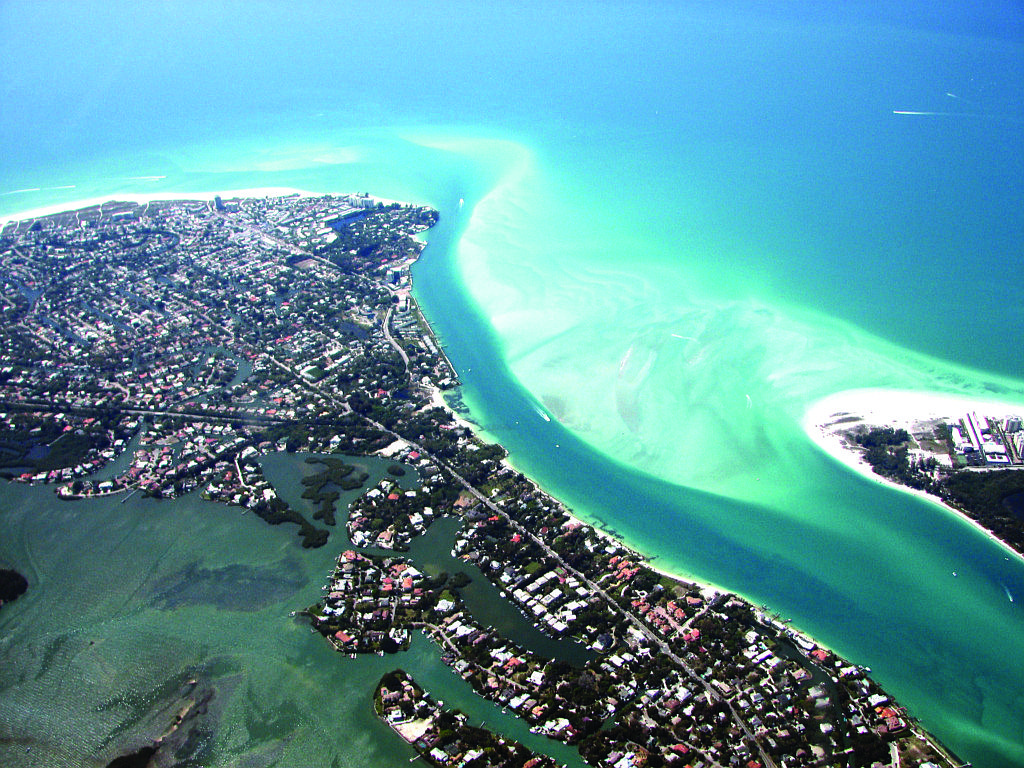- April 19, 2024
-
-
Loading

Loading

The Siesta Key Association has officially declared its opposition to a U.S. Army Corps of Engineers project to mine Big Pass for Lido Beach sand, thus ending the association’s longtime reluctance to weigh in on the controversial topic.
SKA board member Peter van Roekens, the group’s most active advocate for more scrutiny of the dredge plans, made the motion at a Jan. 9 meeting for the board to draft and release a statement officially opposing the project.
The final statement, which the board modified from what van Roekens originally proposed, read: “Based on the data currently available to us, we would not support any form of dredging in Sarasota Big Pass channel and shoal.”
The Lido Beach renourishment project is slated to initially remove 1.3 million cubic yards of sand from Big Pass’s outer shoal. Subsequent dredges and renourishments will be conducted periodically over 50 years.
The SKA statement did not, however, mention the three proposed erosion-control jetties, known as groins, included in the dredging project’s plans for Lido Beach. The groins have been a longstanding flashpoint for opposition to the project.
Van Roekens’ motion prompted pushback from some SKA board members who felt that by taking an official stance in opposition to the dredge before the issue had reached the floor of the Sarasota County Commission, the Siesta neighborhood association might lose its leverage to affect the ongoing debate.
SKA President Catherine Luckner pushed to delay the statement, urging the board to wait until the Army Corps follows up with additional information regarding the dredging project’s potential impact on Siesta Key beaches.
“I don’t think there is any urgency to do this today,” Luckner said. “We shouldn’t cut off the conversation.”
SKA board member Michael Shay echoed Luckner’s reservations.
“We said we wanted all the data before we took an official stand, and we haven’t seen that,” Shay said.
The reason for waiting on the data, according to Luckner, was to maintain the relevance of SKA in the dredging debate by maintaining the association’s role as a neutral mouthpiece for Siesta residents’ concerns and an active partner in increasing public awareness — not a close-minded opposition voice with which the Army Corps and area government officials would be reluctant to work.
Van Roekens, however, said that the Army Corps might apply for permits before follow-up studies and a peer review were complete.
The Siesta Key Village Association and SKA have both advocated for public hearings and an independent peer review of the dredging project. The County Commission is expected to bring the issue up in March, and the Army Corps has yet to follow through on an independent peer review of the project.
“They don’t have their act together,” van Roekens said, speaking about the Army Corps. “You don’t have to be a coastal engineer to see there are problems with the data. I know the benefit to Lido, but what is the benefit to Siesta? There are other sources of sand they can use. I think this is very, very risky.”
“The sand is going to be used to renourish a private beach, and our tax money is going to be used to damage our island,” said Mark Smith, a Siesta Key architect and SKVA board member.
Public comments from Siesta residents attending the Jan. 9 meeting were strongly in favor of the board taking an official stand against the dredge. Many in attendance expressed their concerns that Siesta beaches were going to be put in peril for the benefit of Lido Key beaches.
“Let’s put our foot down and say, ‘It’s our key, we don’t want this,’” said one Siesta resident attending Thursday’s meeting.
SKA’s official statement opened with the words, “Based on the current data available,” indicating the association would be willing to modify its stance if the Army Corps released data that proved the mining of the Big Pass shoal would not negatively affect the navigability of the pass or the health of Siesta beaches.
The revised statement passed unanimously.
“This puts the demand on people to continue working (on) the problem,” Luckner said, referring to the wording.
Van Roekens said he was satisfied with the final result, explaining that it sent a strong message to both the Army Corps and the Sarasota County Commission that the residents of Siesta Key are not satisfied with the risks the dredging project poses to Siesta Key’s natural environment.
“No engineer can definitively say that there is no risk to Siesta; they just don’t know what’s going to happen,” van Roekens said. “We need to take a stand and say we oppose this,” he said.
BY THE NUMBERS
1.3 million cubic yards: Amount of sand that will be mined in the first dredge
1.6 miles: Length of Lido Beach scheduled for renourishment
300 feet: How far in width the project will expand Lido Beach
$22.7 million: Estimated cost of the project
Contact Nolan Peterson at [email protected]